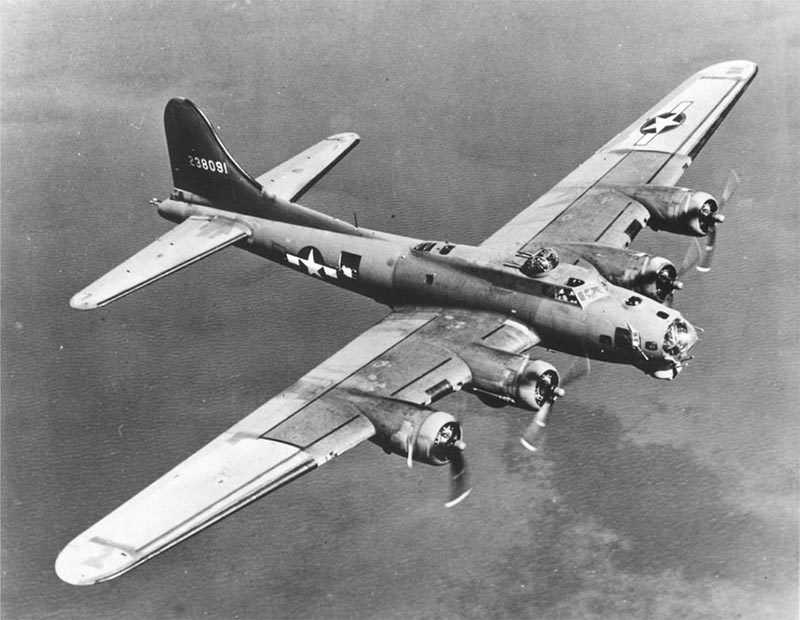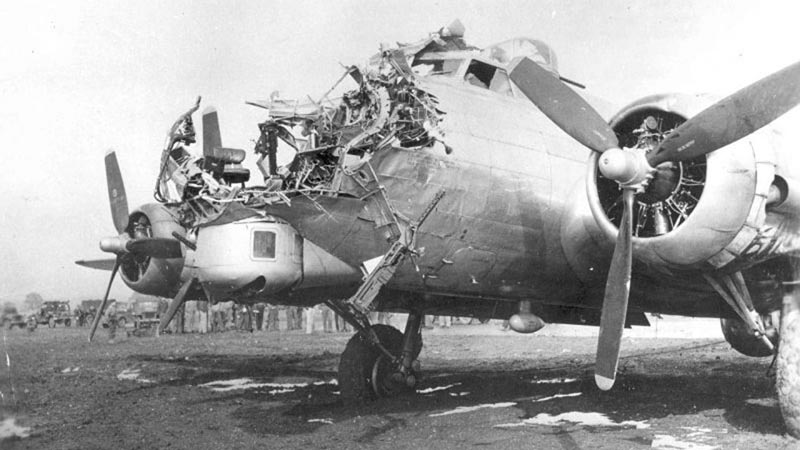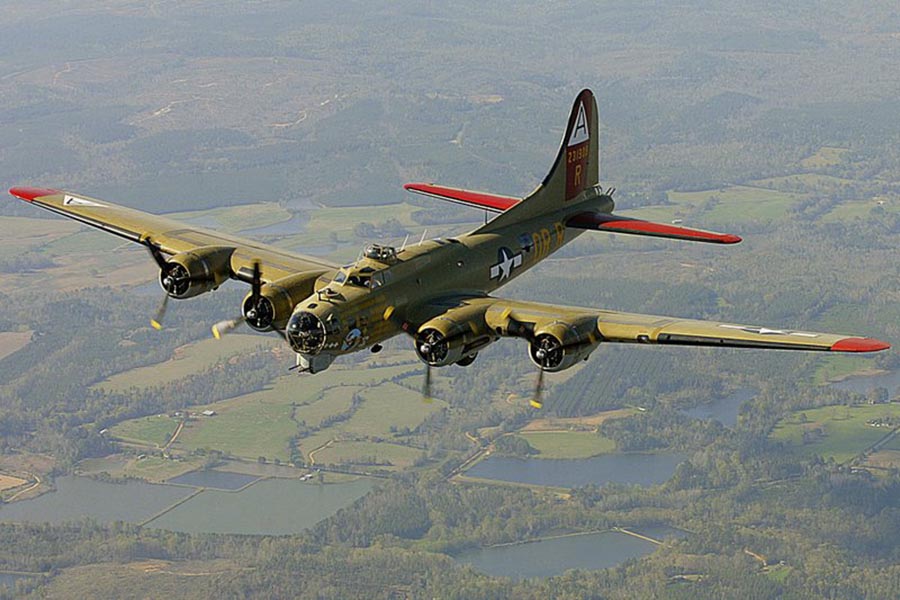The Boeing B-17 Flying Fortress military aircraft has rightfully earned its name. It was widely used by the US Air Force during the Second World War, having proven itself from the best side. The combination of innovative weapons and reliable armor made the B-17 one of the best bombers of its time.
- A total of 12,731 B-17 units were produced. The total combat losses during the Second World War amounted to approximately 4,750, that is, every third bomber was shot down.
- The aircraft immediately became a legend due to its ability to return to the airfield even with significant damage. Documented cases of returning to the base with one working engine out of four, with huge holes in the sides and with almost no tail.
- A characteristic feature of the B-17 was the use of a high-precision bombsight of the Norden system. The sight allowed for effective bombing from a height of more than 23.000 feet (7 kilometers).
- The British Air Force, which did not have high-range bombers at the beginning of WWII, also used the B-17 Flying Fortress model. The United States delivered 39 units to the UK.
- The most shattering defeat in the history of the B-17 Flying Fortress suffered during the Second Raid on Schweinfurt on October 14, 1943. 291 B-17s participated in the mission, 77 of them were destroyed, and another 122 were seriously damaged. Only 33 aircraft returned to the base without damage.

- In the Pacific Theater of Operations, B-17s flew at altitudes inaccessible to Japanese A6M Zero fighters and had protective weapons that made it easy to fight with poorly protected fighters.
- During the Second World War, the Germans captured about 40 B-17 bombers as a result of emergency landings. 12 of them were later used by the Luftwaffe.
- In 1948, several B-17s entered service with the Israeli Air Force. They were used during the first Arab-Israeli war (1948-1949) and the Sinai campaign of 1956
- The B-17 Flying Fortress was one of the largest bombers of that time. It had a length of 74.3 feet (22.66 meters), a wingspan of 103.7 feet (31.62 meters), and was operated by a crew of 10 people.
- Currently, 46 copies of the B-17 Flying Fortress have been preserved in a fully complete form. 39 of these are located in the United States, and 9 of them are capable of flying.
- The B-17 could maintain a 250 mph (400 kph) cruising speed when flying, but the maximum speed that this aircraft can reach is 320 mph (520 kph).
- 22 countries have used the B-17 Flying Fortress model at various times. The Soviet Union repaired several aircraft that made an emergency landing on its territory and used them in operations against Germany.
- In Sweden, one of the copies of the B-17 was modified, and for some time was used as a passenger airliner.
- Based on this aircraft, the Boeing Model 307 Stratoliner was developed, the world’s first high-altitude bomber with a sealed cabin, capable of cruising at an altitude of 20,000 feet (6 km). The Yamaha XV1900 Stratoliner motorcycle was named after this aircraft.
- During World War II, B-17 Flying Fortress aircraft dropped 650195 tons of bombs on targets in Europe. For comparison, the B-24 Liberator dropped 451691 tons, and all the other combined American Air Forces dropped 420520 tons.

- The name “Flying Fortress” was coined by a reporter from the Seattle Times and has since become a trademark of Boeing. The company lost the tender because the model crashed, but the aviation corporation allocated a special F1 fund for the purchase of 13 B-17 aircraft on an experimental basis.
- One B-17 Flying Fortress would have cost the US $ 238,329 in 1945. The cost of modern American high-range bombers reaches several billion dollars.
- The B-17 was equipped with 4 engines and retained the ability to fly even if 2 of them were disabled. The total power of all 4 engines was 1217 hp.
- Despite all its achievements, the B-17 had a bad start. During the flight with two competing aircraft, it was decided that the B-17 model showed more prospects and was in the tune with the recent USAAC philosophy. By the end of the first assessment, USAAC had budgeted 65 B-17 aircraft. However, a tragic event occurred shortly after that. During the second evaluation flight, the B-17 experienced some mechanical problems during the flight. As a result, it crashed, and both pilots of the aircraft were killed.
- Although various models of the B-17 Flying Fortress were produced, the B-17G was the best of them. Almost 9,000 B-17Gs were produced, which is the most consistent of any variant due to their excellent performance. The B-17G weighed 65,000 pounds (29,5 tons) and could reach a service ceiling of 35,600 feet (10,850 meters) and carry a payload of 9,600 pounds (4354 kilograms).


